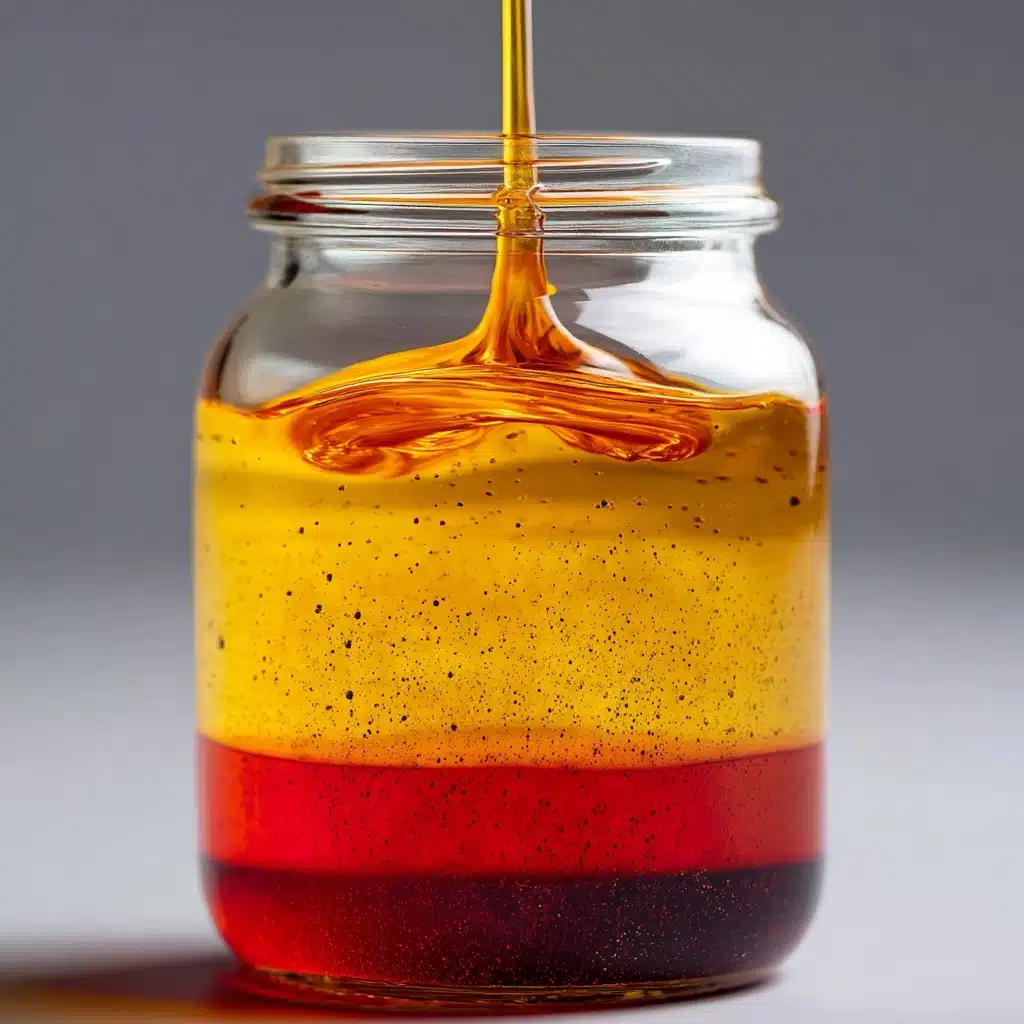If you’re searching for a zesty, vibrant boost for your salads or Mediterranean dishes, look no further: this Greek Salad Dressing brings restaurant-quality flavor right into your own kitchen! Made from extra virgin olive oil, red wine vinegar, Dijon mustard, and classic herbs, this dressing is not only a breeze to whip up, but also perfectly captures that sun-kissed Greek flair we all crave. Whether you’re tossing it with crisp veggies, drizzling over grilled chicken, or dunking in some crusty bread, each bite will make your table feel like a breezy seaside taverna.

Ingredients You’ll Need
You won’t believe how such basic pantry staples combine to create magic! Each ingredient in this recipe plays a key role, adding depth, brightness, or a subtle kick to this irresistibly authentic dressing.
- Extra virgin olive oil: The base that gives your Greek Salad Dressing its luscious mouthfeel and signature Mediterranean taste.
- Red wine vinegar: Brightens up the dressing with tangy acidity, making every salad bite pop.
- Dijon mustard: Acts as the secret emulsifier, ensuring your flavors blend smoothly and provides a gentle, peppery warmth.
- Garlic, minced: A freshly minced clove adds savory depth and an unmistakable classic zing.
- Dried oregano: The defining herb, this adds that unmistakable Greek aroma and earthy flavor to the mix.
- Salt: Brings out all the other tastes, striking just the right balance with the tangy and herbal notes.
- Black pepper: A subtle punch to round out every drop with mild heat.
- Honey (optional): Adds the faintest touch of mellow sweetness to balance the vinegar, especially if you prefer a smoother finish.
How to Make Greek Salad Dressing
Step 1: Gather and Prep Ingredients
Start by assembling all your ingredients on the counter. Take a moment to mince the garlic and measure everything out. This little bit of prep ensures you’re ready to simply whisk and go, making the process even speedier.
Step 2: Mix Everything Together
In a small bowl or, even better, a jar with a tight lid, combine the olive oil, red wine vinegar, Dijon mustard, minced garlic, oregano, salt, black pepper, and honey if using. This order is helpful because the denser ingredients dissolve into the liquids first, providing even flavor in every drop.
Step 3: Whisk or Shake to Emulsify
Give everything a hearty whisk or securely seal the jar and give it a vigorous shake. Watch as the oil and vinegar magically blend, turning the mix cloudy and unified—a sure sign your Greek Salad Dressing is properly emulsified!
Step 4: Taste and Adjust
Now for the fun part: dip in a piece of lettuce, taste, and adjust! Maybe your palate wants a pinch more salt or a splash more vinegar for brightness. Customizing it lets you make the dressing totally your own.
Step 5: Store or Use
If you’re not serving right away, transfer the Greek Salad Dressing to an airtight container and refrigerate. Just remember to give it a quick shake each time before using, as natural separation is completely normal.
How to Serve Greek Salad Dressing

Garnishes
When using Greek Salad Dressing directly on salads, consider finishing your bowl with a sprinkle of extra dried oregano or a dusting of freshly ground black pepper. A few briny Kalamata olives or a crumble of feta cheese can instantly dial up both flavor and Mediterranean charm.
Side Dishes
Don’t stop at greens! This lively dressing works wonders drizzled over roasted vegetables, mixed into pasta salads, or as a marinade for grilled chicken and shrimp. Serve a side of warm pita or grilled bread to soak up every delicious drop.
Creative Ways to Present
Pour your Greek Salad Dressing into a vintage glass bottle or a mason jar for a rustic, charming table presentation. For parties, set up a “dressing bar” with this and a few other options so guests can choose their favorites. You can even brush it onto skewered veggies before grilling for a beautiful, appetizing gloss.
Make Ahead and Storage
Storing Leftovers
To store leftover Greek Salad Dressing, just pour it into a sealed jar or container and refrigerate for up to one week. The robust olive oil may solidify slightly in the fridge, so don’t worry if it looks a bit cloudy—this is totally normal and nothing a quick shake or a few minutes on the counter won’t fix!
Freezing
While it’s possible to freeze Greek Salad Dressing, the fresh garlic and herbs shine best when used fresh. Freezing may slightly alter the texture and make the oil separate once thawed, so I recommend making small batches you’ll use within a week for best taste.
Reheating
No reheating required—just bring your dressing out of the fridge and let it sit at room temperature for about 10 to 15 minutes if the oil has solidified. Then give it a good shake or stir before serving on your favorite salads.
FAQs
Can I use fresh oregano instead of dried?
Yes, you can absolutely swap in fresh oregano for dried! Use about three times the amount since fresh herbs are less concentrated. Just chop it finely to help release the oils into the Greek Salad Dressing.
Is this dressing vegan?
The recipe is naturally vegan if you skip the optional honey or replace it with maple syrup or agave. Every main component, from the olive oil to the vinegar and mustard, keeps this dressing plant-based and dairy-free!
What kind of olive oil works best?
Go for a high-quality extra virgin olive oil, as its fruity, peppery flavor forms the backbone of a great Greek Salad Dressing. Avoid light or refined oils, since they lack the character that makes this recipe sing.
How do I keep the dressing from separating?
Giving the mixture a solid whisk or shake each time really helps. The Dijon mustard acts as an emulsifier, binding oil and vinegar together, but separation is natural—just shake again before each pour for a perfect blend.
Can I add lemon juice for more zing?
Definitely! A squeeze of fresh lemon juice brightens the Greek Salad Dressing even more, making it extra vibrant. Just add a tablespoon and adjust to your taste preferences.
Final Thoughts
This Greek Salad Dressing is more than just a recipe—it’s a ticket to the bright, bold flavors of the Mediterranean right at your table. Once you taste its making-it-yourself magic, you’ll want to drizzle it over everything! Give it a try and turn the simplest salad into something everyone will be reaching for seconds.
Print
Greek Salad Dressing Recipe
- Total Time: 5 minutes
- Yield: 6 servings (about 3/4 cup total) 1x
- Diet: Vegan, Gluten-Free
Description
This Greek Salad Dressing is a classic vinaigrette bursting with Mediterranean flavors. Made with simple ingredients, it’s perfect for salads, marinades, and more.
Ingredients
Ingredients:
- 1/2 cup extra virgin olive oil
- 3 tablespoons red wine vinegar
- 1 teaspoon Dijon mustard
- 1 clove garlic, minced
- 1 teaspoon dried oregano
- 1/2 teaspoon salt
- 1/4 teaspoon black pepper
- 1/2 teaspoon honey (optional, for balance)
Instructions
- In a small bowl or jar, combine ingredients: Combine olive oil, red wine vinegar, Dijon mustard, garlic, oregano, salt, pepper, and honey.
- Emulsify the dressing: Whisk or shake well until fully combined.
- Adjust seasoning: Taste and adjust if needed.
- Storage: Use immediately or refrigerate in an airtight container for up to 1 week. Shake well before each use.
Notes
Notes:
- This dressing is versatile and can be used on salads, pasta, or as a marinade.
- For extra flavor, add lemon juice or crushed red pepper.
- Prep Time: 5 minutes
- Cook Time: 0 minutes
- Category: Condiment
- Method: No-Cook
- Cuisine: Greek
Nutrition
- Serving Size: 2 tablespoons
- Calories: 140
- Sugar: 0g
- Sodium: 120mg
- Fat: 15g
- Saturated Fat: 2g
- Unsaturated Fat: 13g
- Trans Fat: 0g
- Carbohydrates: 1g
- Fiber: 0g
- Protein: 0g
- Cholesterol: 0mg







